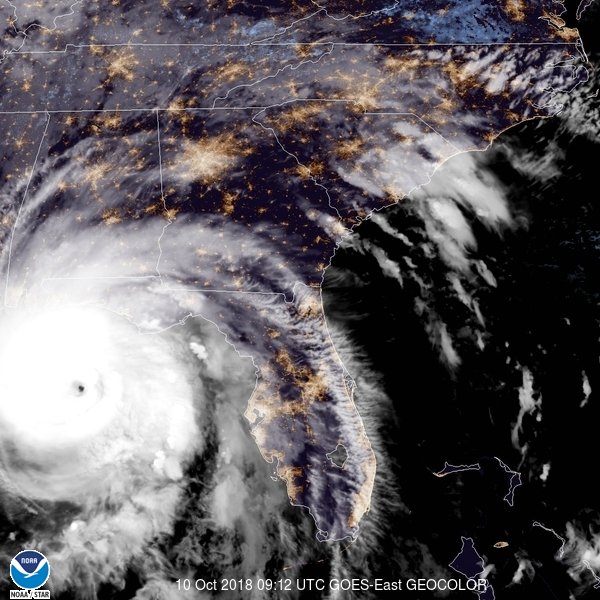
We are still seeing the effects of Hurricane Michael (https://www.nhc.noaa.gov/archive/2018/MICHAEL_graphics.php) makes landfall. Obviously, this storm differs significantly from the other big tropical troublemaker, Florence, this hurricane season. While slow-moving Florence brought torrential rainfall to parts of the Carolinas and Georgia, Michael’s main punch will be its ferocious Category 4 winds (130-156 mph) driving water onshore in the form of a storm surge that could exceed 12 feet in some places.

While I don’t know much about the shape of the continental shelf off the Florida Panhandle (the shape of the shoreline sea floor can sometimes “funnel” water and create even larger storm surges), an additional concern that comes to my meteorological/astronomical mind is the timing of the tide. A high tide that coincides with the timing of landfall only exacerbates a bad situation.
Making things potentially worse is the fact that the moon is in its “new” phase today. That means that the Earth-Moon-Sun are all essentially in a line. Since the Earth’s tides are produced by the gravitational pull the Moon (more influential) and Sun (less influential) exert on the Earth, tides tend to be higher (spring tides) when the Earth, Moon and Sun are all lined up (as they are in new and full moon phases). During spring tides, high tides tend to be higher than average and low tides lower than average.
All this sent me to look at the tide predictions for Panama City, FL — https://tidesandcurrents.noaa.gov/noaatidepredictions.html?id=8729108&legacy=1 . Fortunately for the folks along the Florida panhandle, it would appear that Michael’s landfall (early this afternoon) will not coincide with high tide (not forecast until late this evening).
Those looking at the tide chart might wonder why there are only one high tide and one low tide shown per day at Panama City. Turns out that, while most coastal locations experience two high tides and two low tides per day, locations along the Gulf of Mexico have only one of each — “diurnal” tides (https://oceanservice.noaa.gov/education/kits/tides/tides07_cycles.html) .
- My Brush With Natural History - November 19, 2018
- Spring Tides For a Fall Hurricane - October 11, 2018
- She Comes In Colors - September 25, 2018